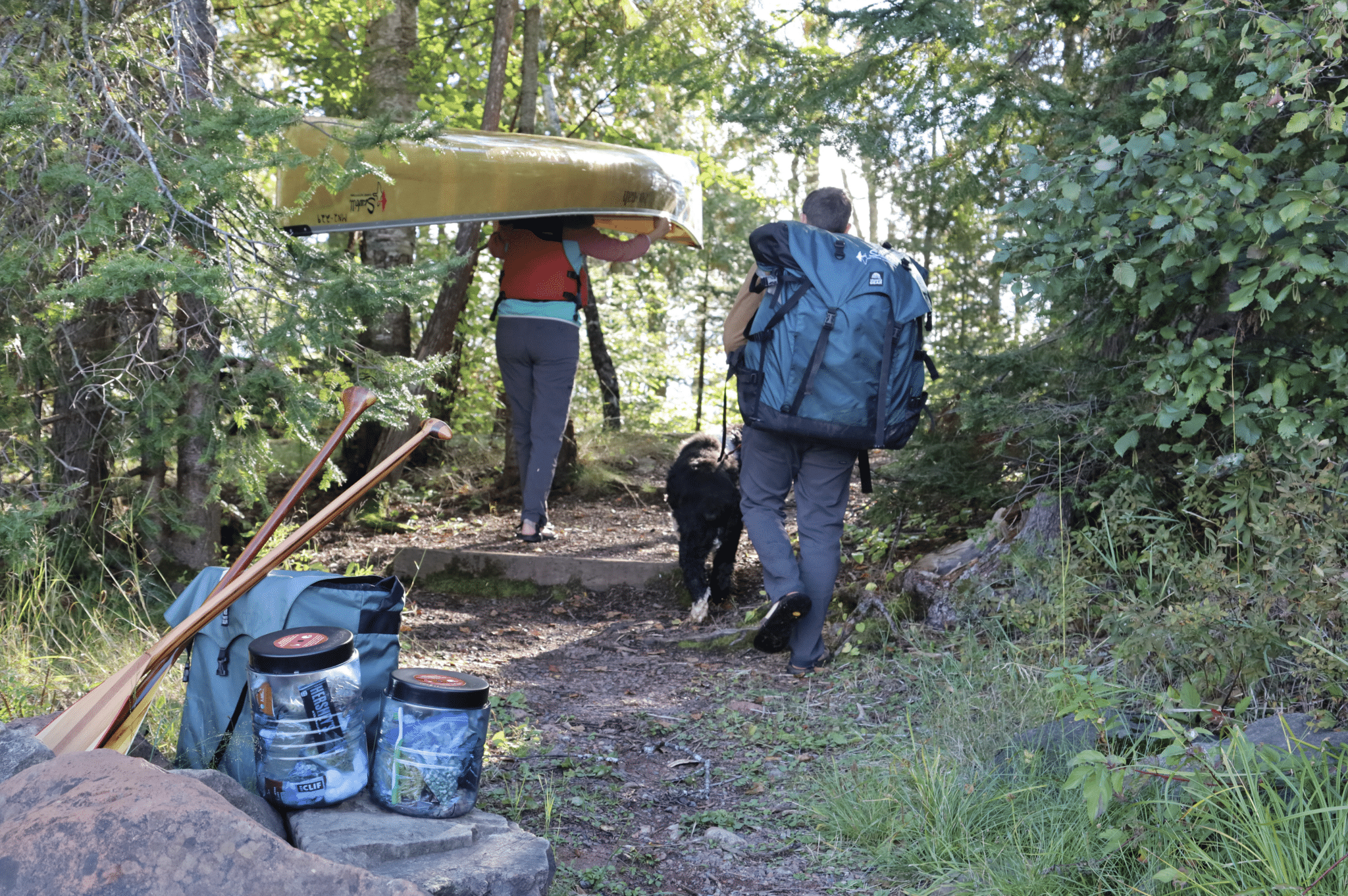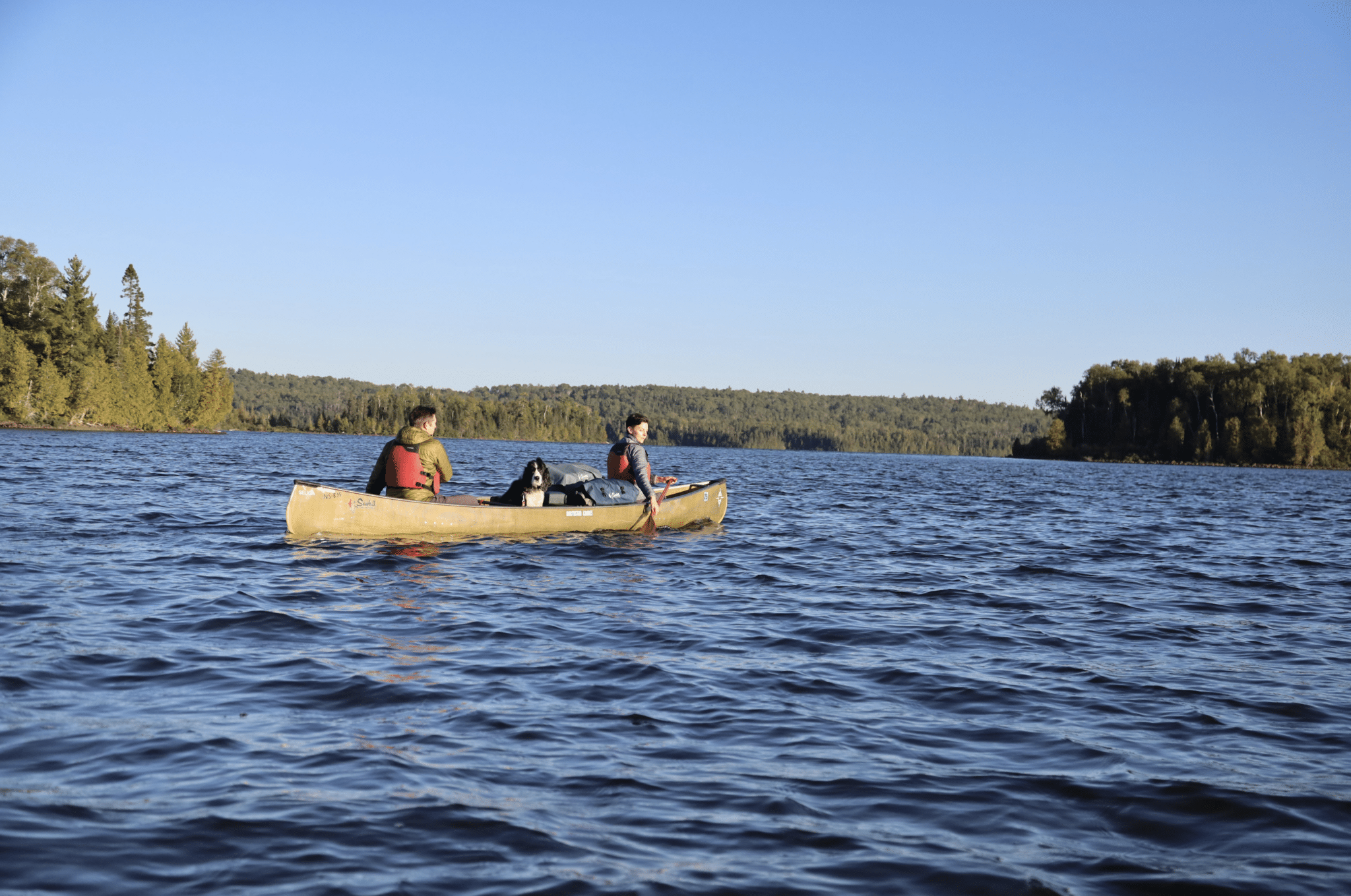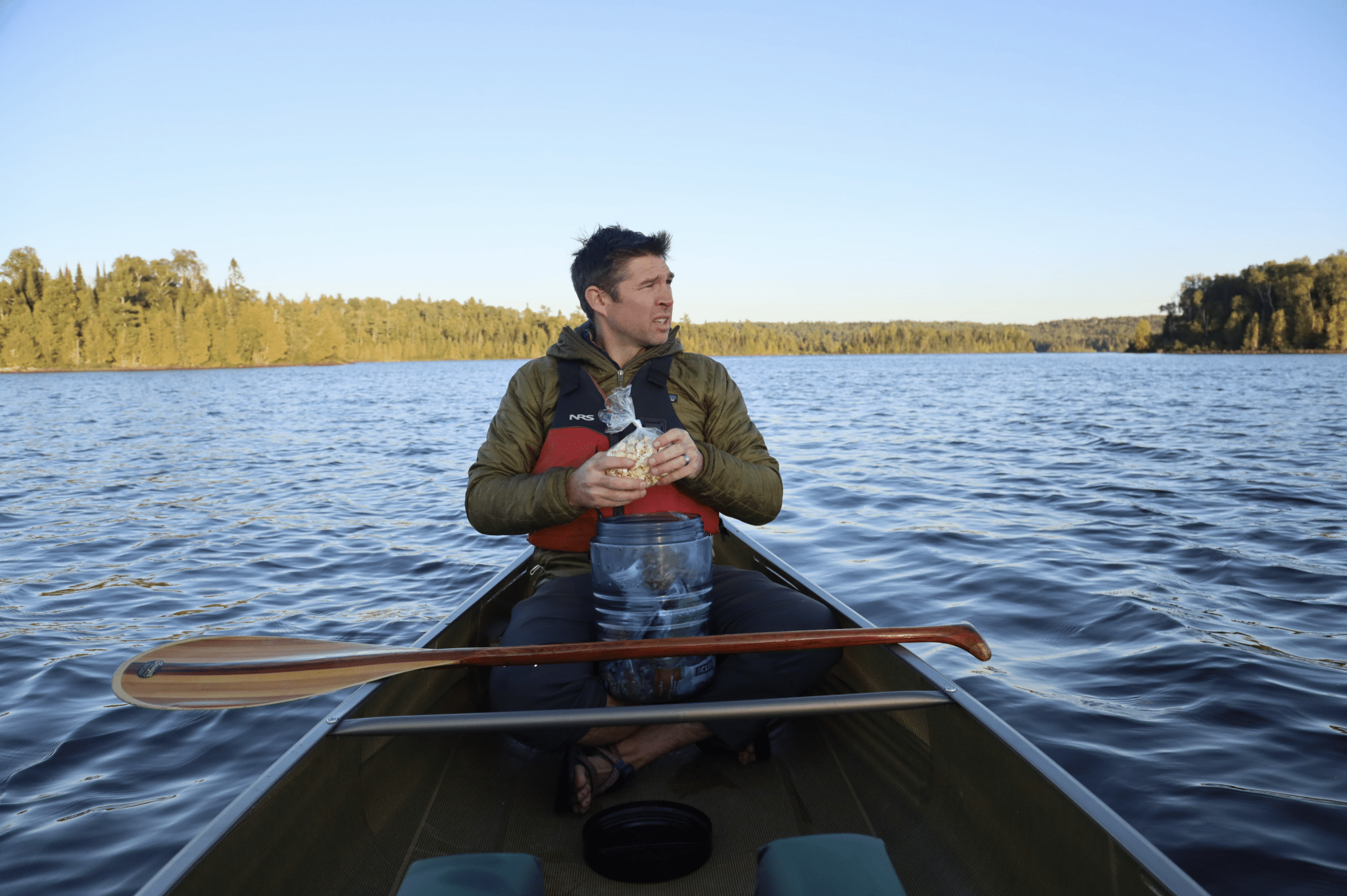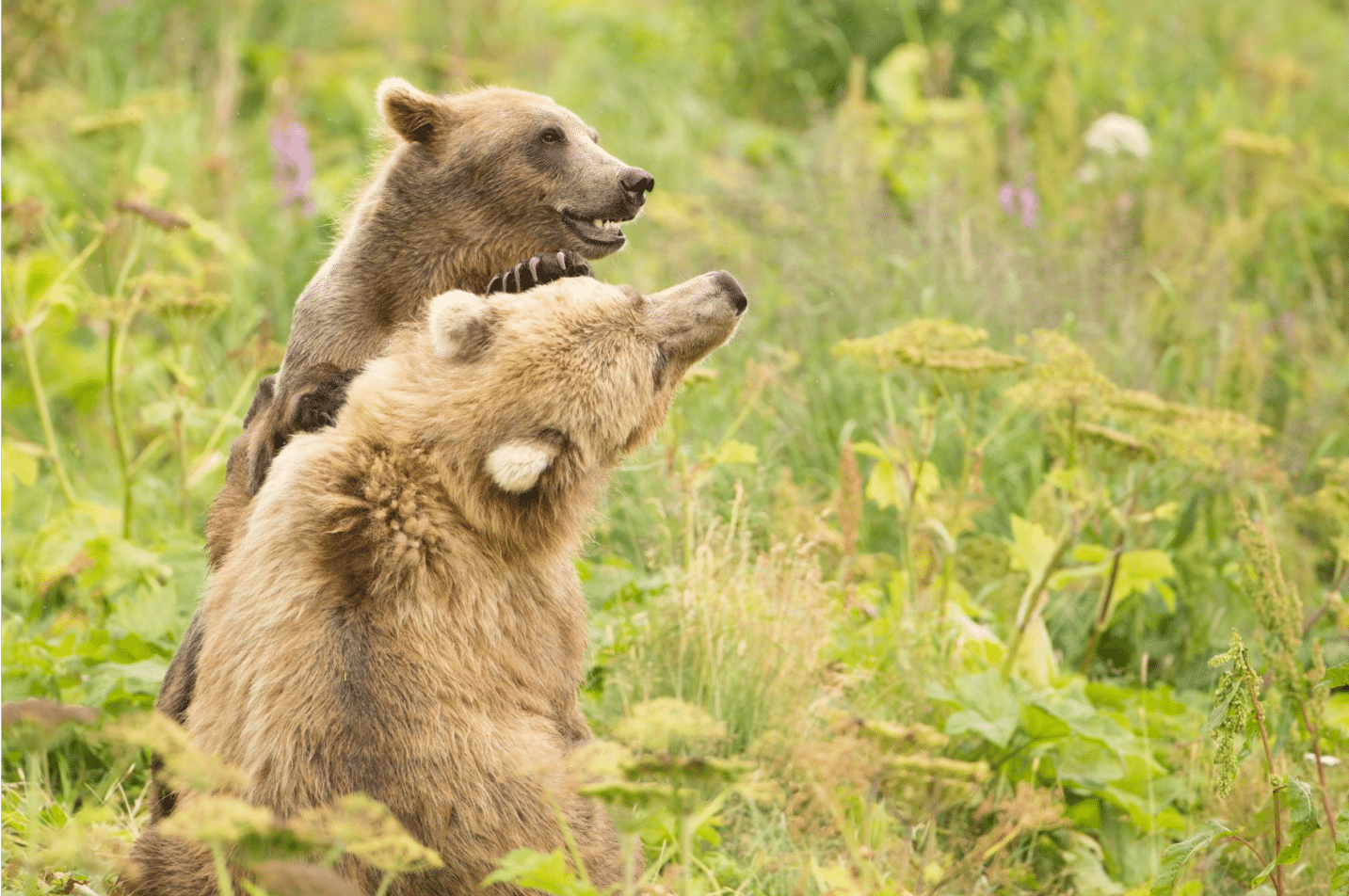Paddle the Backcountry: 5 Multi-Day Canoe Trips to Camp a New Way
I really wanted to take this opportunity to repeat the folk-lore that my home state has more shoreline than any other. Unfortunately, a quick online search to verify it debunked it instead. Still, as I wrote this article about canoe trips, it brought back memories of floating the Illinois River as a kid and paddling across lakes on family camping trips.
If you want to see beautiful country and not use your legs to get around, multi-day canoe trips are the way to go. Let’s check out a few great options to get inspired for the upcoming float season!

Safety Considerations for Canoe Trips
Before we get to those, we’ve got to talk about safety. Just like other outdoor adventures, it’s important to take intentional steps to protect yourself and whoever you may be exploring with.
Gear
-
Personal Floatation Device (PFD)
Waterproof Storage (like canoeing blue barrels)
-
Bearproof Storage & Protection (to protect yourself & your stash)
-
Communication Device (SAT phone or Garmin)
-
Water filtration device or sanitizing tablets (don’t drink the water)
-
Navigation (waterproof map & compass)
Skills
Consider swift water rescue training if you plan on venturing into anything with a decent current. It’s always faster than you think it is!
Be realistic about your ability to portage, navigate via map & compass, etc…
Being thorough in preparation mode will ensure you enjoy your trip to the fullest. Keep safety at the forefront of your mind as you explore your options… like one of these incredible rivers!
Trip 1 – Buffalo River
Location: Arkansas
Length: 135 miles
Bear Territory: Yes
Bear Species: Black bears
Bear Proof Storage Required: No
Permit Required: No
Established Sites: There are a number of established campgrounds along the banks of the river. These require paid fees. Most are FCFS, but some take reservations. Backcountry camping is available on an FCFS basis with restrictions around private land, distance from established campgrounds, and geological formations. Visit the park’s backcountry page for more details.
Hammock Camping: Trees are plentiful, and there are no restrictions on hanging hammocks.

Description: Buffalo National River is one of the few remaining undammed rivers in the lower 48 states and also claims the title of America’s First National River. Its scenic 135-mile winds through NW Arkansas and offers views of dense forests, natural rock formations, and cliffs. If the full length isn’t feasible, it’s easy to section up, thanks to plentiful put-ins. The most popular section can be floated from Ponca to Pruitt. For more exclusion, check out the lower sections or plan on floating during the week.
The Buffalo River isn’t spring-fed, so flow is dependent on rainfall in the area. That makes spring the most attractive paddling season, especially in the upper sections that don’t benefit from run-off as much as the lower parts. You can check flow status with these easy-to-read gauges or get more detailed data for a specific put-in from the United States Geological Survey.
Black bears do call Arkansas home, so come prepared with bear-proof storage options. While the lands the Buffalo River flows through don’t require canisters, they’re still recommended.
Trip 2 – Northern Forest Canoe Trail
Location: New York, Vermont, Quebec, New Hampshire, & Maine
Length: 740 miles
Bear Territory: Yes
Bear Species: Black bears
Bear Proof Storage Required: No
Permit Required: No
Established Sites: Yes – Camping ranges from established, fee-use sites and primitive backcountry camping. Know whether you are on public or private land before setting up camp.
Hammock Camping: Use of hammocks ranges with the landscape. Some portions will offer plenty of available trees, while others will be more open.
Description: Floating the entire length of this massive trail network would mean months of beautiful scenery, white water rapids, and long stretches of still water paddling. The trail, completed in 2006, follows traditional transportation routes used by Native Americans, settlers, and traders from a bygone era.
Accommodations vary from primitive backcountry sites all the way to chic bed-and-breakfasts and historic hotels. The Northern Forest Canoe Trail offers all the maps and guidebooks you’ll need to get away for days or weeks on end. OR, you could use the interactive trip planner that lets you visualize the distance between put-ins, portages, and even diners. This map also lets you specify what type of camping you want to find.

Be sure to visit this page to stay abreast of any changes to the trails or portage areas. There’s also an app available for purchase, but you won’t have service for a decent portion of the trail.
This region of the country is home to plenty of black bears, so stay bear-aware as you recreate!
Trip 3 – Boundary Waters
Location: Minnesota & Ontario
Length: More than 1,200 miles of charted routes
Bear Territory: Yes
Bear Species: Black bears
Bear Proof Storage Required: Yes – Canisters are required unless you plan to hang your food 12’ off the ground and 6’ from the trunk of your hang tree.
Permit Required: Yes – During peak season (May 1 – October 1), overnight permits should be reserved in advance to ensure you’ll have one to pick up upon your arrival. For day-paddling and non-peak season overnight trips, you can self-issue a permit at your entry point. If you plan on crossing national borders, you’ll have to obtain a Remote Area Crossing permit, too.
Established Sites: Yes – More than 2,200 designated sites are available on an FCFS basis. Dispersed camping is also available in Superior National Forest, which surrounds the US side of the Boundary Waters.
Hammock Camping: Trees are plentiful, and there are no restrictions on hanging hammocks.

Description: If you want to truly disappear into the wilderness, northern Minnesota’s Boundary Waters can make your dreams come true. Lush forests and fantastic fishing make it one of the United States’ most visited wildernesses, which is why permits are limited during peak season. They’re made available on the last Wednesday of January at 9:00 am CST, so keep that window open to snag one while you can!
This network of lakes and connecting waterways resides within 1.1 million acres of designated wilderness area. Explorers can spend an endless amount of time on the water, visiting islands and finding remote locations to pitch a tent. Outfitters and guides can take charge of navigation, or you can use this route map to plan your trip.
Black bears are plentiful, and all visitors are required to either store food in a bear-proof canister like the BV500-Journey or go to the trouble of hanging food.
Trip 4 – Smith River
Location: Montana
Length: 59 miles
Bear Territory: Yes
Bear Species: Black bears
Bear Proof Storage Required: Yes – Smith River rules specify that IGBC-approved containers may be used and/or food may be stored behind an electric fence that meets specific regulations. Hangs are allowed.
Permit Required: Yes – Permits are very limited and must be reserved in advance. Occasionally, there will be cancellations resulting in permits becoming available during float season.
Established Sites: Yes – Camping is only allowed at designated campsites
Hammock Camping: Some – There are no restrictions on hanging hammocks, but some campsites won’t have suitable trees.
Description: Floating this state park waterway that winds through dramatic canyons in central Montana offers a great way to enjoy a long week-end. Visitors should plan on spending at least 2 nights and 3 full days to complete it, but many choose to maximize the 4 nights allowed during peak float season (May 15 – July 15).
It’s known for amazing trout fishing. It also has some challenging sections for paddlers to navigate, thanks to the amount of submerged boulders, float gates, and sharp bends running past sheer rock walls. Two stretches of class II whitewater boost the excitement factor here. Intermediate paddling skills are needed.

Permitting is required year-round, and a lottery opens for peak-season opportunities. You can apply for a float permit by creating an account with the Montana Fish Wildlife & Parks Department.
The Smith River flow gauge can be checked to ensure optimal flow rate and forewarn any dangerous conditions.
This is bear country, and bear-proof storage is a requirement for visitors. Make sure you include all attractants in your storage plans to keep them at bay.
Trip 5 – Alatna River
Location: Alaska
Length: 185 miles
Bear Territory: Yes
Bear Species: Black bears and grizzly bears
Bear Proof Storage Required: Yes – IGBC-certified containers are required in all Alaska state parks
Permit Required: No
Established Sites: No
Hammock Camping: No – Tree growth is slow in the tundra, making hammock camping implausible. Guests are encouraged to camp on gravel bars to avoid damaging vulnerable plant life.
Description: It’s not exactly suited to canoes, but the Alatna River deserves a mention here as an Alaskan float option. The remote nature requires float plane transportation to certain put-ins, making inflatable kayaks and rafts the best choice for most trips. To plan your trip, you’ll have to read up on section descriptions and find an outfitter to transport you and your gear.
Gates of the Arctic National Park & Preserve surrounds the Alatna. Fragile arctic tundra ecosystems make following Leave No Trace principles especially important. Designated camping sites don’t exist, so visitors are encouraged to camp on gravel bars if possible. Making fires (when conditions permit and material is available) should also be done on gravel bars so high-water conditions can wash away the signs of your stay. Packing a propane stove is highly recommended since you may be hard-pressed to find firewood. Cutting down standing trees (live or dead) is prohibited.
Bears abound, and canisters used for food storage must be IGBC-approved.

Float Your Way to a New Perspective
Paddling through the backcountry offers a whole new perspective. Towering cliffs, dense forests, and even sunset skies look different when you’re on the water. Which one of these rivers are you going to enjoy next?
Author Profile

Jessica Cockroft
Jess merges her passion for words and an insatiable longing for adventure as an outdoor freelance content writer and marketer. When she’s not busy stringing words together you’ll probably find her planning another camping trip for her crew of kids or taking care of the homestead. You can find her on LinkedIn and Instagram, as well as on her own website.



